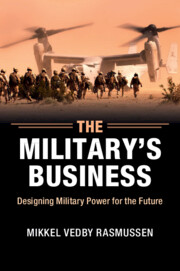2 - The modern military system
Published online by Cambridge University Press: 05 March 2015
Summary
‘Pray explain, CIGS’, Winston Churchill asked the Chief of Imperial General Staff, General Sir Alan Brooke, ‘how is it that in the Middle East 750,000 men always turn up for their pay and rations, but when it comes to fighting only 100,000 turn up?’ Britain had recoiled from the retreat from Dunkirk and prevented a German invasion in the ‘Battle of Britain’. In 1942, the Prime Minister's immediate fear was no longer that Britain would be defeated, but rather that the British armed forces were incapable of winning. In Singapore, a British army of 100,000 troops had been defeated by Japanese soldiers on bicycles, and the German Afrika Korps was pressing a superior British force to the brink in Egypt. What if the cold-blooded fact was that British soldiers and their commanding officers no longer knew how to produce a decisive victory on the battlefield? Even if Brooke was exasperated by the fact that much of his job was to take the great man's abuse, the General was no more impressed with the English fighting man than the PM. ‘If the Army cannot fight better than it is doing at the present’, Brooke wrote in his diary, ‘we shall deserve to lose our Empire.’ Yet the answer to Churchill's pointed question about why most of the soldiers seemed to be in the rear rather than at the front was more complicated, and with consequences further into the future than either Churchill or Brooke could possibly appreciate at the time.
It is easy to dismiss Churchill's critique of the British Army's performance as yet another example of how his grasp of the past was firmer than his grasp of the future. How was he to appreciate the nature of modern warfare? In military jargon, distinction is drawn between the ‘teeth’ of the army, which are the units on the front line in actual combat, and the tail, which takes care of administration, logistics and the like.
- Type
- Chapter
- Information
- The Military's BusinessDesigning Military Power for the Future, pp. 15 - 41Publisher: Cambridge University PressPrint publication year: 2015



